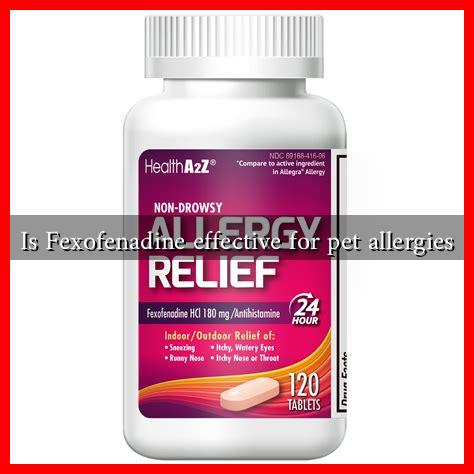-
Table of Contents
Is Fexofenadine Effective for Pet Allergies?
Pet allergies are a common issue for many individuals, leading to discomfort and a reduced quality of life. As pet ownership continues to rise, so does the prevalence of allergies related to furry companions. Fexofenadine, an antihistamine commonly used to treat allergic symptoms, has gained attention as a potential remedy for pet allergies. This article explores the effectiveness of fexofenadine for pet allergies, its mechanism of action, and considerations for pet owners.
Understanding Pet Allergies
Pet allergies are primarily caused by proteins found in a pet’s skin cells, urine, and saliva. When these proteins are inhaled or come into contact with the skin, they can trigger allergic reactions in sensitive individuals. Common symptoms of pet allergies include:
- Itchy or watery eyes
- Runny or stuffy nose
- Sneezing
- Skin rashes or hives
- Difficulty breathing or wheezing
According to the American College of Allergy, Asthma, and Immunology, approximately 10% of the population is affected by pet allergies, with cats and dogs being the most common culprits.
What is Fexofenadine?
Fexofenadine is a second-generation antihistamine that is widely used to alleviate allergy symptoms. Unlike first-generation antihistamines, fexofenadine is less likely to cause drowsiness, making it a popular choice for those who need to maintain their daily activities. It works by blocking the action of histamine, a substance in the body that causes allergic symptoms.
Effectiveness of Fexofenadine for Pet Allergies
Research on the effectiveness of fexofenadine specifically for pet allergies is limited, but there are several studies that highlight its efficacy in treating general allergic rhinitis and other allergy-related symptoms. Here are some key points to consider:
- Symptom Relief: Clinical studies have shown that fexofenadine can significantly reduce symptoms of allergic rhinitis, which may include those triggered by pet allergens.
- Dosage and Administration: The typical dosage for adults is 60 mg twice daily or 180 mg once daily. It is essential to follow the recommended dosage and consult a healthcare provider for personalized advice.
- Combination Therapy: Some individuals may find that combining fexofenadine with other treatments, such as nasal corticosteroids or leukotriene receptor antagonists, can enhance symptom relief.
Case Studies and Anecdotal Evidence
While scientific studies specifically targeting fexofenadine for pet allergies are sparse, anecdotal evidence suggests that many individuals have found relief using this medication. For instance, a case study involving a patient with severe cat allergies reported significant improvement in symptoms after starting fexofenadine, allowing them to coexist with their feline companion comfortably.
Considerations and Side Effects
While fexofenadine is generally well-tolerated, it is essential to be aware of potential side effects, which may include:
- Headache
- Dizziness
- Nausea
- Dry mouth
Individuals with certain medical conditions or those taking specific medications should consult their healthcare provider before starting fexofenadine. Additionally, it is crucial to note that while fexofenadine can alleviate symptoms, it does not address the underlying cause of pet allergies.
Conclusion
Fexofenadine can be an effective option for managing symptoms associated with pet allergies, particularly for those who experience allergic rhinitis. While more research is needed to establish its efficacy specifically for pet allergens, existing studies and anecdotal evidence suggest that it can provide significant relief. Pet owners suffering from allergies should consider consulting with a healthcare provider to determine the best course of action, which may include fexofenadine as part of a comprehensive allergy management plan.
For more information on managing pet allergies, you can visit the American College of Allergy, Asthma, and Immunology.

